Roger Corman Was the Low-Budget Filmmaker Who Remade Hollywood
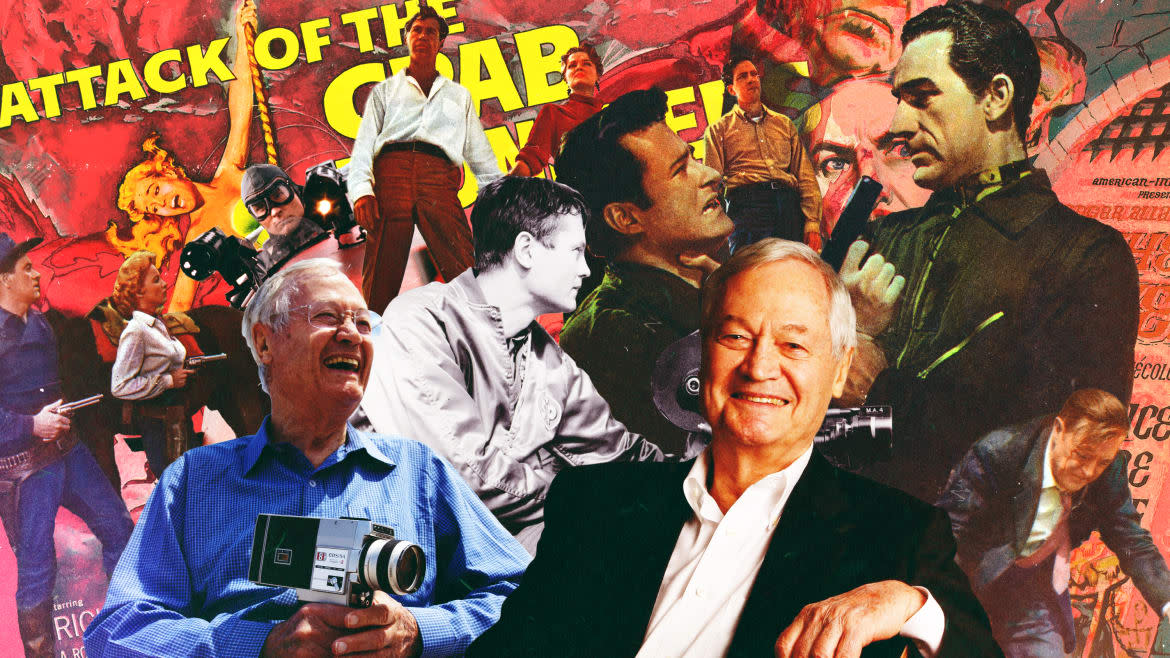
- Oops!Something went wrong.Please try again later.
Roger Corman never made a great movie. None of his films won awards, and they rarely got good reviews, when they were reviewed at all.
Corman made movies that were fun. He made horror movies, westerns, sci fi—name a genre, especially a genre that filled out the bottom of a double bill at the drive-in, and Corman probably made a movie in it.
But if Corman, who died May 9 at his home in Santa Monica, California, never made a great movie, that does not mean he was not a great filmmaker. In fact, if you add up the A-list Hollywood careers that Corman helped launch—actors, directors, producers, and writers by the dozens—careers that might never have flourished had he not encouraged them in the first place—by that metric, Corman might be one of history’s greatest moviemakers.
Among the filmmakers who cut their teeth on Corman productions were Francis Ford Coppola, Martin Scorsese, Ron Howard, Polly Platt, Peter Bogdanovich, Paul Bartel, Jonathan Demme, Donald G. Jackson, Gale Anne Hurd, Joe Dante, James Cameron, John Sayles, Monte Hellman, Carl Franklin, George Armitage, Jonathan Kaplan, George Hickenlooper, Curtis Hanson, Robert Towne, and James Horner.
Roger Corman: My Nine Most Memorable Films, From ‘The Trip’ to ‘Battle Beyond the Stars’
Among the actors whose earliest credits were on Corman projects were Jack Nicholson, Peter Fonda, Bruce Dern, Charles Bronson, Dennis Hopper, Tommy Lee Jones, Talia Shire, Sandra Bullock, Robert De Niro, and David Carradine.
If you add in the films made by foreign filmmakers, including works by Akira Kurosawa and Federico Fellini, that Corman distributed in the U.S., his greatness is a lock.
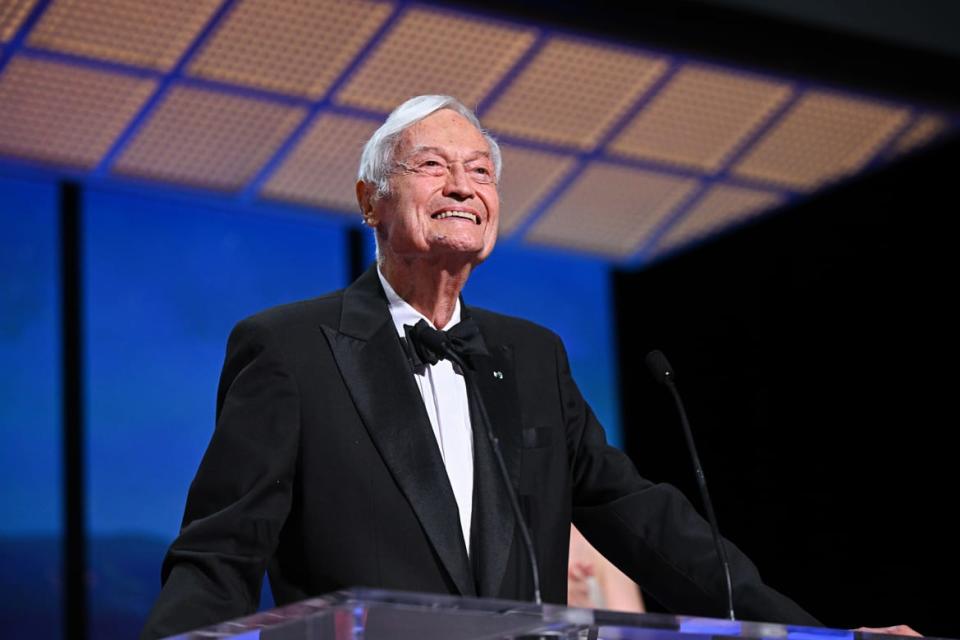
Roger Corman presents The Grand Prix Award during the closing ceremony during the 76th annual Cannes film festival at Palais des Festivals on May 27, 2023 in Cannes, France.
Judged by numbers alone, Corman’s output is impressive: Over the course of a career that began around 1950 and really only stopped with the author’s death, he directed 55 films and produced 385.
Corman was one of the last major moviemakers who almost stumbled into a job in the movie business. The generations that followed him, whose members he was so instrumental in hiring and giving a chance in the industry, were very often film school graduates like Coppola or curators at museum film programs like Bogdanovich. When Corman started out, film schools were scarce, when they existed at all.
Born in Detroit in 1926, Corman grew up there and in Los Angeles, where he attended Beverly Hills High and then, with time out for the Navy during World War II, graduated from Stanford with a degree in industrial engineering in 1947. But he lasted only four days as an engineer at U.S. Electrical Motors in Los Angeles before he told his boss he’d made a terrible mistake and quit.
His brother was already working in the movie business as an agent. Roger started more humbly, in the mail room at 20th Century Fox, and his rise was more meandering than meteoric. At one point he dropped out altogether, moved to Europe, and studied English for a year at Oxford on the GI Bill.
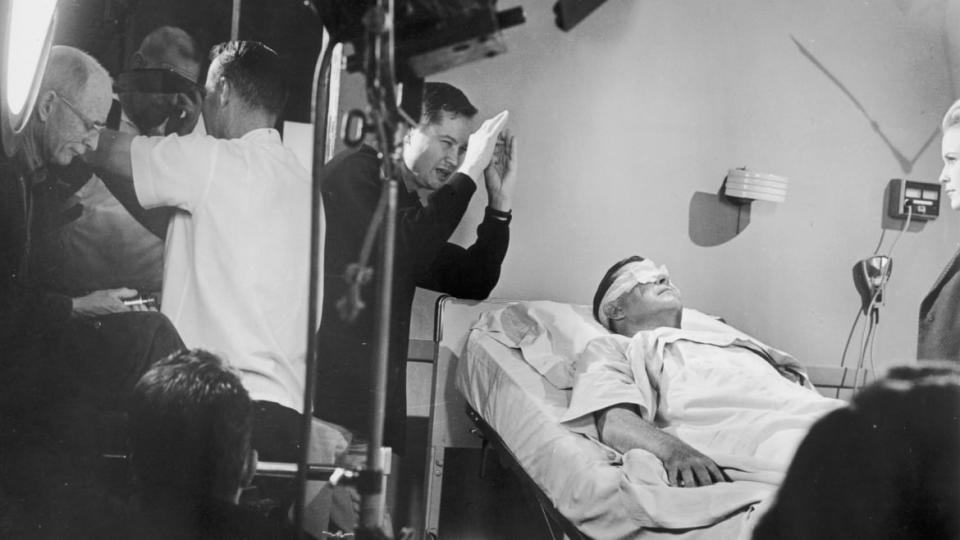
Director Roger Corman lines up a shot as Ray Milland lays in a hospital bed with a bandage over his eyes, on the set of X: The Man with the X-Ray Eyes.
After a short spell in Paris, he cut his Grand Tour short and returned to Los Angeles. By the early ’50s, he was right back where he had left off: at the bottom of the ladder—TV stagehand, studio messenger boy, assistant to an agent. In the latter job, he wrote and sold a screenplay (his boss was so tickled by young Corman’s brass that he let him keep the commission on the sale).
Corman worked for free as an assistant producer on the production, Highway Dragnet, just for the experience. Then he took the $2,000 he had made from the script sale, borrowed another $12,000, and produced his own first feature, Monster From the Ocean Floor. The debut did well enough to encourage him to make another movie, The Fast and the Furious (no relation to the future franchise, although the producer of the later films did have to bargain with Corman for the rights to the title).
And with that, the pattern was set for the rest of Corman’s life: Make a movie, plow the proceeds into the next one, and just keep going. His budgets were tiny, and the shooting schedules for his movies were measured in days, not weeks or months—he shot The Little Shop of Horrors in two days and change. Sometimes he worked as his own producer and distributor, and sometimes he contracted with bigger companies. The idea was to keep making movies—profitable movies: not for nothing was his autobiography called How I Made a Hundred Movies in Hollywood and Never Lost a Dime. No one knew better than Corman that the movie business was a business.
He was completely at home in the B-movie universe. In fact, he may have only been comfortable there. Almost as soon as he signed on with Columbia Pictures, a major studio, to make A-list films in the mid-’60s, he bailed in a hurry, explaining, “Every idea I submitted was considered too strange, too weird; every idea they had seemed too ordinary to me. Ordinary pictures don’t make money.”
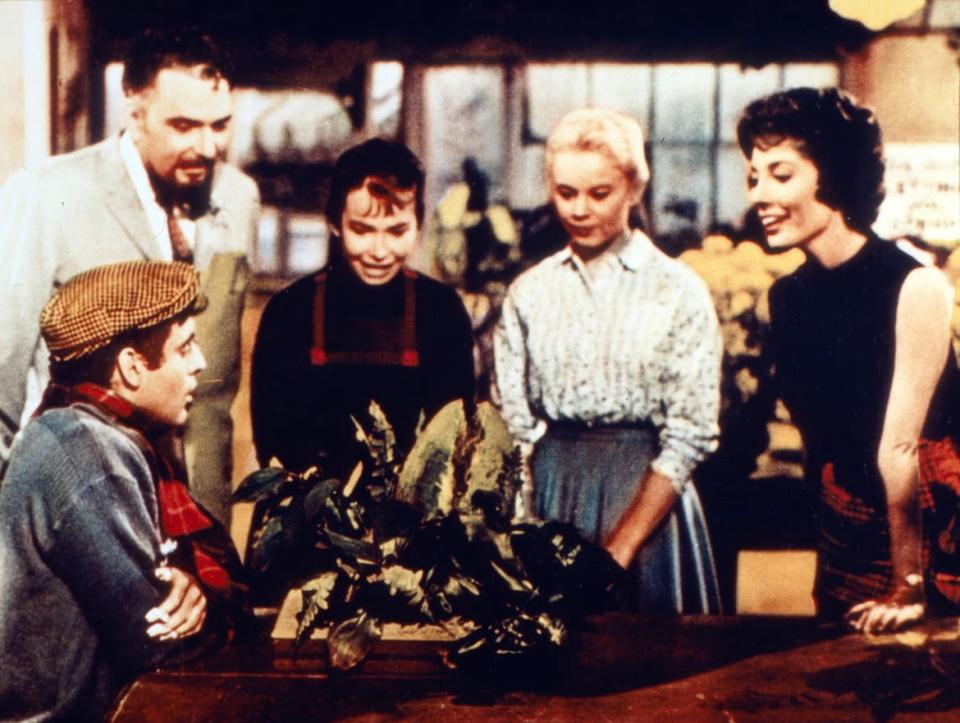
A scene from The Little Shop of Horrors directed by Roger Corman in 1960.
The list of movies that Corman proposed to make for Columbia gives some inkling of his variegated sensibility: a biopic of Robert E. Lee that he talked about filming for years, an adaptation of James Joyce’s Portrait of the Artist as a Young Man, an adaptation of Kafka’s The Penal Colony, and a script by novelist Richard Yates about the Battle of Iwo Jima.
Corman produced and directed films for several studios on Hollywood’s “Poverty Row,” the sorts of studios where producers often came up with a good title, commissioned an alluring movie poster, and then and only then wrote a script and hired a crew. His most durable partnership in Hollywood’s nether reaches was with American International Pictures, where he conceived, produced, and directed the Edgar Allan Poe movies for which he and the studio are best remembered.
Filmed in the late ’50s and early ’60s, seven of the eight Poe films starred Vincent Price in what can only be termed the loosest of adaptations (The Raven was actually conceived as a comedy, but all of them were consistently witty and only occasionally scary). Horror stalwarts like Peter Lorre and Boris Karloff often filled out the cast, and their presence only enhanced the gothic horror’s camp effect.
Once the minor box-office craze for Poe abated in the mid-’60s, Corman found new genres to exploit: motorcycle gang movies, women in prison movies, race car movies, beach movies. What distinguished him in this era was not the films themselves but the unobtrusive intelligence with which they were made. Movies like The Masque of the Red Death and Grand Theft Auto remain entertaining today largely thanks to Corman’s unstated credo that just because something is made on a shoestring doesn’t mean you condescend to either the material or the audience. If nearly all of Corman’s films were something of an inside joke, he made sure the audience was always in on it.
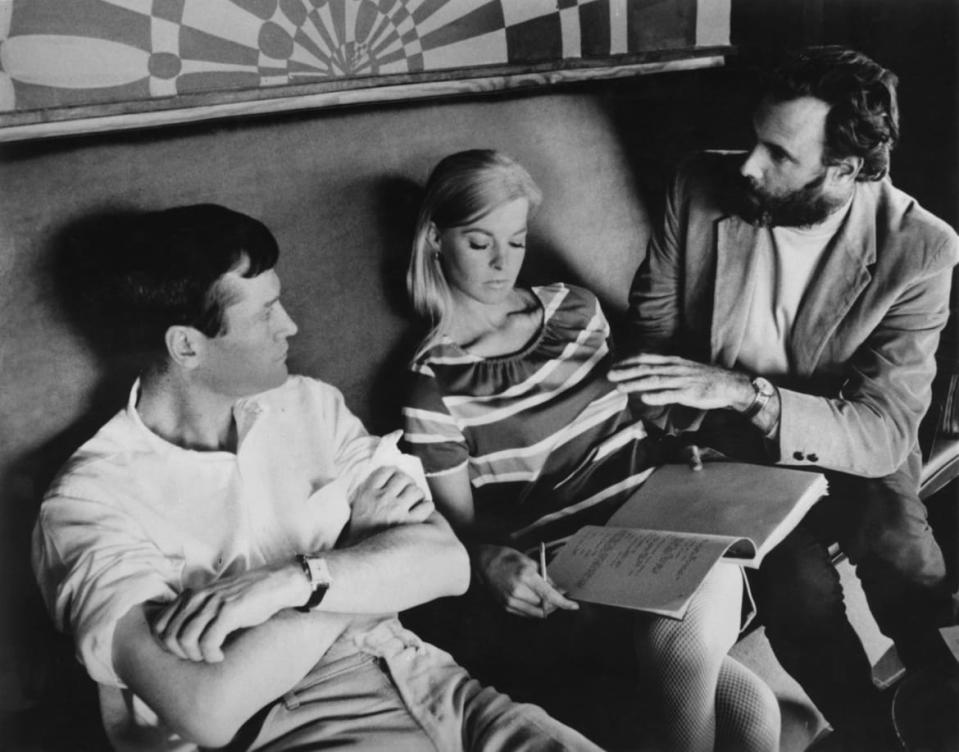
Roger Corman, left, with actor Bruce Dern, right, during the making of The Trip in 1967.
To pull that off meant working with people as witty and intelligent as he was, and to do that and not go broke meant working with untried but promising talent who would work for peanuts.
And so began the partnerships/mentorships with the likes of Scorsese, Coppola, Towne, Nicholson, Demme, and the rest, all of whom worked briefly for Corman before moving on to make the movies that made their reputations.
Corman didn’t expect anyone to stick around. As he told Ron Howard when he let him co-write and direct Grand Theft Auto, “If you do this picture correctly, you'll never have to work for me again."
In 1970 Corman and his brother founded New World Pictures, a lucrative production company that made a string of movies like Student Nurses, Women in Cages, I Escaped From Devil’s Island, and Big Bad Mama, all successful B movies that launched the careers of soon to be Hollywood A-listers like Joe Dante, Curtis Hanson, and Pam Grier.
At a time when major studios were backing away from importing foreign films, Corman began buying the distribution rights to films by renowned directors, beginning in 1972 with Ingmar Bergman’s Cries and Whispers, for which he paid $75,000 and made more than $2 million. Thereafter he bought the rights to films by François Truffaut, Federico Fellini, Volker Schlöndorff, and Akira Kurosawa.
Over the next decade, New World won more Academy Awards for Best Foreign Film than all other studios combined.
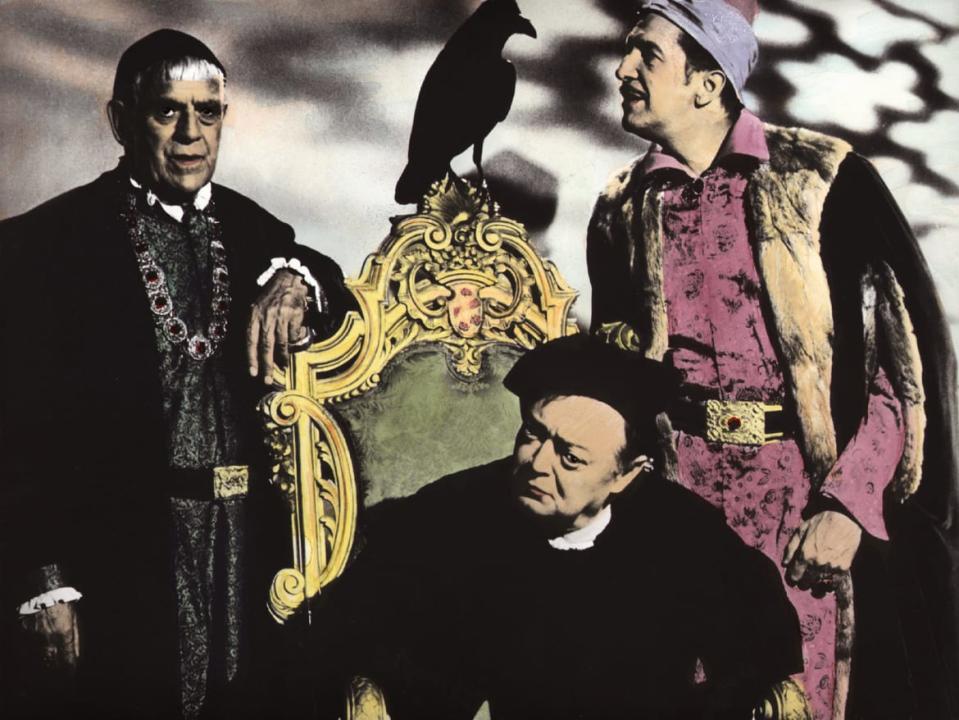
Boris Karloff, Peter Lorre, and Vincent Price in Roger Corman's The Raven from 1963.
Corman had the wisdom to understand that he was never going to be Fellini, but that didn’t mean he didn’t understand or love the work of great directors, and he certainly shared their work ethic. He may have been happier making movies like Dinocroc vs. Supergator or Piranhaconda, but he insisted on the most rigorous standards for those productions.
“He gives you a tremendous amount of freedom,” said director Joe Dante, one of Corman’s proteges. “For all of us, the trick was: If you’re going to make a women-in-cages movie, you’ve got to make the best women-in-cages movie that you can possibly make. And when you look at the New World pictures against the competition, they’re all better.”
Corman's private life was apparently as routine as his career was wacky. He stayed married to Julie Ann Halloran, also a producer, for 54 years; they had four children. Politically he was a lifelong progressive who didn't just talk the talk but did everything he could to advance the work of women and minorities even when it wasn't fashionable. His one blind spot was a stubbornly anti-gay bias. According to Beverly Gray's Roger Corman: Blood-Sucking Vampires, Flesh-Eating Cockroaches, and Driller Killers, Corman was "infamously homphobic," in the words of production manager Clark Henderson. During the production of Space Raiders in 1984, a spaceship was supposed to be purple. When it came out lavender, an outraged Corman exploded, “There are no fags in space!”
How a Group of Turkish Filmmakers Stole ‘Star Wars’
Corman kept working into his nineties. In 1983 he sold New World for $16.9 million and started Millennium Pictures, which became New Horizons, which was succeeded by Concorde. In the 1990s he made 13 movies for Showtime, briefly started a line of comic books, and began a string of horror movies for the SyFy channel. In 2009, he collaborated with Joe Dante on a Netflix series called Splatter, all the while continuing to produce and occasionally direct theatrical features.
At an October 2023 celebration of Corman and his work in Los Angeles, numerous alumni of the “Roger Corman School of Filmmaking” testified to his greatness. Not surprisingly most of the praise was inspired by the practical-minded, down-to-earth ways Corman used to teach fledgling filmmakers in his employ. Writer/director/producer Amy Holden Jones recalled how Corman suggested changing the title of a script called Sleepless Nights to Slumber Party Massacre. “That was a smart move,” she said.
But no one summed up their mentor better than film and TV director Allan Arkush, who made Rock and Roll High School with the Ramones for Corman, who pointed to his former boss and said simply, “The profound thing is, this is the only person to run a studio who knows how to make a movie.” It was a jaw-dropping claim, but no one contradicted it.
Get the Daily Beast's biggest scoops and scandals delivered right to your inbox. Sign up now.
Stay informed and gain unlimited access to the Daily Beast's unmatched reporting. Subscribe now.

